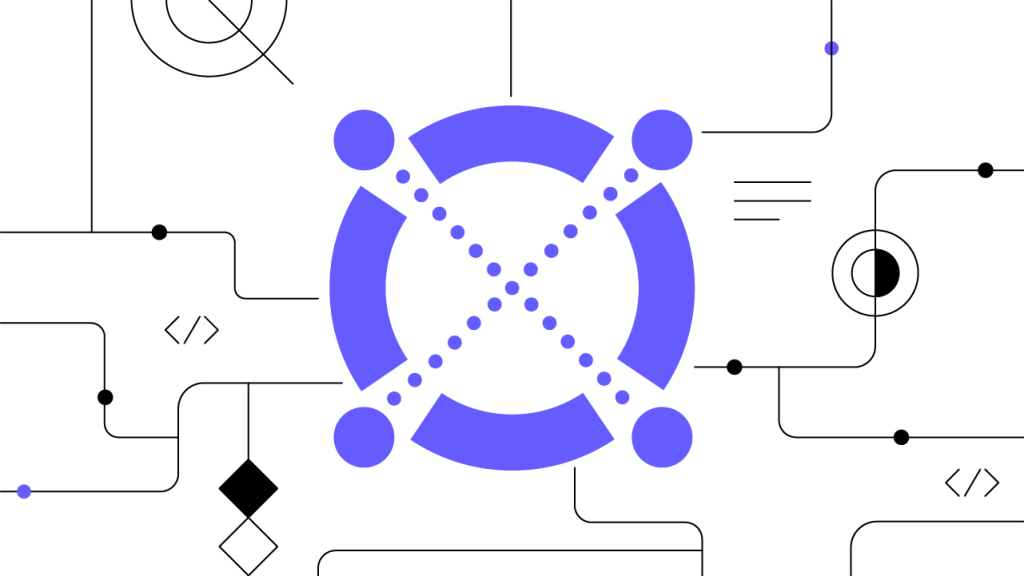Contents
Elrond Network (EGLD): An Internet Scale Blockchain
Elrond is a cheap, efficient, and scalable blockchain network that provides utility for dApp developers and enterprise solutions alike.
Updated January 10, 2022 • 4 min read

Summary
An internet-scale blockchain, Elrond is fast, cheap, and efficient, and built to provide utility across the spectrum of use cases. Elrond Network leverages Adaptive State Sharding and its unique Secure Proof-of-Stake (SPoS) consensus mechanism to offer industry-leading scalability. This article highlights some of the advanced features that the Elrond crypto protocol offers.
Elrond Network Design
Launched in July 2020, the Elrond blockchain is designed to provide decentralization, security, and scalability for distributed apps and enterprises alike. The project focuses on cross-chain interoperability, developer support, and achieving maximum operational efficiency. Elrond Network calls itself an internet-scale blockchain, meaning it is designed to handle transactional throughput on par with major internet platforms, as opposed to the relatively low throughput associated with other blockchain networks. To put Elrond’s throughput in perspective: the Bitcoin network can confirm an average of 7 transactions per second (TPS); the Elrond crypto team claims its network can handle 15,000 TPS, and at a cost of only one cent per transaction.
Elrond achieves this remarkable network efficiency with an innovative combination of its bespoke Secure Proof-of-Stake consensus mechanism, advanced sharding tech, validator network structure, and native Elrond coin eGold (eGLD).
The Elrond Coin: eGold (eGLD)
While the Elrond Network provides a platform for the deployment of smart contracts, decentralized applications (dApps), and even entire blockchain protocols, it is Elrond’s native eGold (eGLD) coin that facilitates the functioning of the whole network. The utility of the eGLD coin on Elrond is multifold. It is used as part of the platform governance mechanism, for staking and validator rewards, and as payment for transactions and smart contracts. Platform users and developers alike pay to use the Elrond Network with the eGLD coin, which serves as gas for the entire ecosystem. The eGLD coin is designed for use with Elrond’s proprietary Maiar Wallet, which enables users to send near-instant transactions over the Elrond Network. Maiar offers borrowing, lending, sending, and receiving features, in addition to staking.
As of December 2021, the circulating supply of eGLD coins was 20 million, with 57% of these locked up in the network’s staking rewards protocol. New eGLD coins will be released slowly according to their smart contracts over the next 10 years until the final supply of 31.4 million eGLD coins is reached.
Secure Proof of Stake (SPoS)
The Elrond Network uses its own unique Proof-of-Stake (PoS) consensus algorithm called Secure Proof of Stake (SPoS) that features a number of unique innovations. On the Elrond Network, a node is a server, smartphone, or computer that runs the Elrond node client software to relay and process data across the network. While all PoS networks utilize a system of nodes to transact data and establish consensus, Elrond makes use of three specific types of nodes.
Validators are the primary nodes on Elrond, and are responsible for processing transactions on the network in exchange for eGLD.
Observers are passive network nodes that simply read and relay network information. Unlike Validators, Observers are not obligated to stake eGLD coins to participate in the network and are not rewarded for their services.
Fishermen are specialized nodes that verify or challenge block data after it has been processed by validator nodes. A Fishermen node is allocated rewards in proportion to its effectiveness in detecting malicious actors.
An aspect of the Elrond Network’s SPoS mechanism that enables its transaction throughput is its near-instantaneous randomized validator selection, which is enabled by blockchain sharding — the process of breaking a whole blockchain into smaller, more manageable datasets for maximum efficiency. Validator nodes are then randomly assigned to these individual shards so that each validator only needs to confirm the data held on its particular shard, rather than all of the data held on the blockchain.
SPoS also uses Boneh–Lynn–Shacham (BLS) multi-signature technology to randomly select nodes within each shard to finalize validator selection in 100 milliseconds (0.1 seconds). This is considered exceptionally fast for a blockchain network, and is the kind of speed for which the internet-scale designation is reserved.
Elrond’s Blockchain Sharding Innovations
The Elrond Network employs what’s called Adaptive State Sharding by combining three standardized sharding methods (network sharding, transaction sharding, and state sharding) into a balanced high-performance system. Network sharding facilitates the way network nodes are allocated and mapped in specific shards, and transaction sharding is used to determine the way transactions are mapped to shards. State sharding, however, is the most complex — and is what sets Elrond apart from its competition.
Here’s how it works: As transactions often involve accounts that exist on different shards, there is a need to exchange messages and update network states across shards. To improve resilience to a variety of attacks, nodes within network shards are shuffled to maintain security via randomness. The combination of these two factors presents latency challenges when nodes are reassigned and must synchronize to new shards. State sharding requires nodes to store only a portion of the overall network state, rather than the entire state, so that when they are moved to a new shard, they only need to download a portion of the new state — making the synchronization process much quicker.
Further, Elrond utilizes what it calls a Metachain to coordinate the network’s various shards. The Metachain operates on its own specialized shard that communicates directly with all other shards to coordinate the cross-shard operations that enable the entire Elrond crypto ecosystem.
Smart Contracts on Elrond
The Elrond Virtual Machine (VM), or Arwen WASM Virtual Machine, was designed mainly to build smart contracts on the Elrond platform. It supports any programming language that can compile Web Assembly smart contracts including Rust, C/C++, C#, Go, Typescript, and many others. This functionality lets developers program in familiar languages, but Rust is the recommended language because of Elrond's sophisticated Rust smart contract framework.
The Elrond VM’s smart contract engine is designed to be fully compliant with the Ethereum Virtual Machine (EVM), meaning that Ethereum smart contracts can seamlessly run on the Arwen WASM VM. The Arwen WASM VM is also designed to achieve full interoperability between external blockchain systems, helping enable the exchange of value and data between multiple blockchain protocols.
Elrond Use Cases
Elrond is built to support non-fungible tokens (NFTs), and features an NFT framework called Smart Accounts. Smart Accounts function much like an account on any other blockchain network, but with support for key-value data storage at the account level. They allow users to store large amounts of information — like emails, bitcoin addresses, private identity data, health data, proof of citizenship, Know-Your-Customer (KYC) information, and more — directly in their Elrond Network account. Moreover, Smart Accounts are designed to store and prove ownership of digital assets without using the Elrond VM, resulting in less bloating on the smart contracts that govern user funds.
Elrond is working toward deploying Elrond Standard Digital Tokens (ESDTs) — tokenized stablecoins, synthetic assets, and fiat currencies that will run on top of the Elrond Network, but do not require smart contract functionality. Elrond’s scalability and speed also prime the network for functionality with the Internet of Things (IoT).
Enterprises that are exploring blockchain networks as business solutions want platforms that meet their most pressing needs. Elrond Network provides an efficient, scalable, developer-friendly, and inexpensive blockchain protocol that could satisfy many needs of large-scale businesses. With a growing roster of enterprise blockchain clients around the world, Elrond is providing solutions for data exchange, IoT, financial services, and much more — showing that user adoption of the Elrond Network is growing stronger.
Cryptopedia does not guarantee the reliability of the Site content and shall not be held liable for any errors, omissions, or inaccuracies. The opinions and views expressed in any Cryptopedia article are solely those of the author(s) and do not reflect the opinions of Gemini or its management. The information provided on the Site is for informational purposes only, and it does not constitute an endorsement of any of the products and services discussed or investment, financial, or trading advice. A qualified professional should be consulted prior to making financial decisions. Please visit our Cryptopedia Site Policy to learn more.

Is this article helpful?


